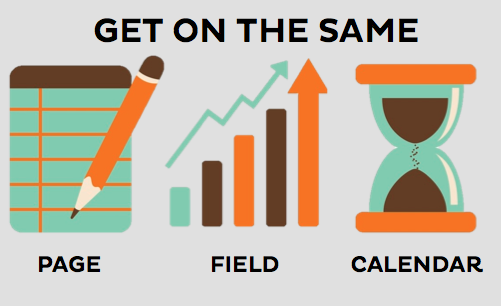
“Don’t get me wrong,” my colleague on the demand generation side of the office said, “everything you guys are making is cool. I just can’t use any of it.”
This was from a conversation at a previous company, in a different job, and in what feels like a different lifetime. But if you work in content marketing or with marketing automation, it probably sounds familiar.
The folks charged with producing content crank out “cool stuff,” which those running the lead nurtures and demand programs insist that content can only work at the top of the funnel. Those with the keys to the marketing automation instance meanwhile craft content on their own, putting together the materials that will work at the middle or even bottom of the sales and marketing funnel.
It doesn’t have to be this way.
These kinds of conversations—and one of the reasons SiriusDecisions found as much as 70% of B2B content goes unused—are usually the result of a lack of communication between the content team and the demand gen artists running your marketing automation. You can address that issue by following these three steps.
Get on the Same Page
Too many content teams are put on an island. Their assets are considered great for driving up links and traffic, but not suitable for lead nurture campaigns.

If the content team wants to be involved at every stage of the funnel, and the demand generation crew wants a steady stream of high-value content, the first step is to get on the same page. That means outlining the specific purposes for your content. From a content team perspective that might involve writing out your inbound strategy, particularly the themes or topics you’re trying to tackle.
Similarly, those charged with running the marketing automation instance should map out the specific guidelines they set for deciding which content is going to get sent out to those leads already inside your pipeline. This would include mapping out all segments within the database, key buyer personas, and all current and planned lead nurture tracks.
And when I say mapping, I mean it. All of these data points should be written out and shared among anyone producing content.
When communicating openly, both teams can begin to tailor content to address those particular segments, buyer personas, and lead nurture tracks. The content team can then not only create high-level assets that build traffic and awareness, but also derivative assets that can be deployed to various segments and nurtures.
The next step is to print out and review content that’s been produced by both teams. This might include big assets, like eBooks and videos, or smaller pieces, like emails. Both the inbound and outbound teams should put these under the magnifying glass and look for inconsistencies in messaging, tone, and voice.
Identify the key aspects of your brand’s message and style, and draft up a style guide. Treat this as the guidelines for content delivered at every stage of the funnel, not just the top.
Get on the Same Field
The goals for content are widening, but many content teams get stuck simply trying to drive traffic, SEO rank, and form submits. If the content team and marketing automation masters are to get along, you need to have a similar set of goals.

The demand generation team should share the specific metrics or benchmarks they set for the content they deliver in the form of emails, webinars, landing pages, and nurtures. The content team should then take those goals and apply them to their own. This doesn’t mean your inbound goals disappear; they’re augmented.
By setting specific goals for how your company’s content will be received within the middle and bottom stages of your funnel, the team producing the content will be incentivized to develop a holistic approach to production. And those driving the marketing automation are far more likely to use that content.
Get on the Same Calendar
“I don’t have any visibility into what your team is doing.”
How many times have you heard that comment? The visibility can often be boiled down to an issue of timing: what’s being developed, who’s working on it, and when it’s supposed to be released out into the world. That’s why an editorial calendar is essential for both content and demand gen teams.

If your marketing automation and content campaigns are planned out in separate calendars, combine them. Your inbound, outbound, and paid teams all need to plan their campaigns in tandem. A single editorial calendar gives a “master view” into all these efforts—and in many cases they reveal opportunities for collaboration and repurposing of content. (If you use content marketing software, you can plan and develop all these different campaigns and channels in one calendar while filtering for individual team members, campaigns, and content types.)
Visibility shouldn’t be an issue given the tools available to marketing teams. So get your marketing automation and content on the same calendar.
Great collaborations start with communication. If your content and marketing automation systems—and the teams running those systems—aren’t talking, you can’t expect a synchronized effort.
These three simple steps are the start to a beautiful friendship.
